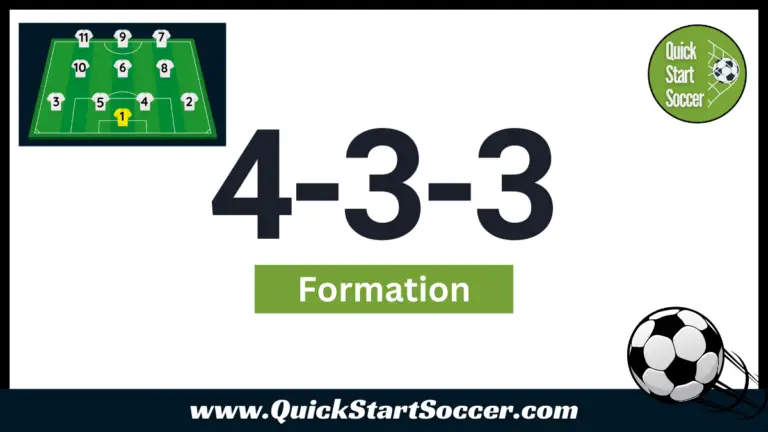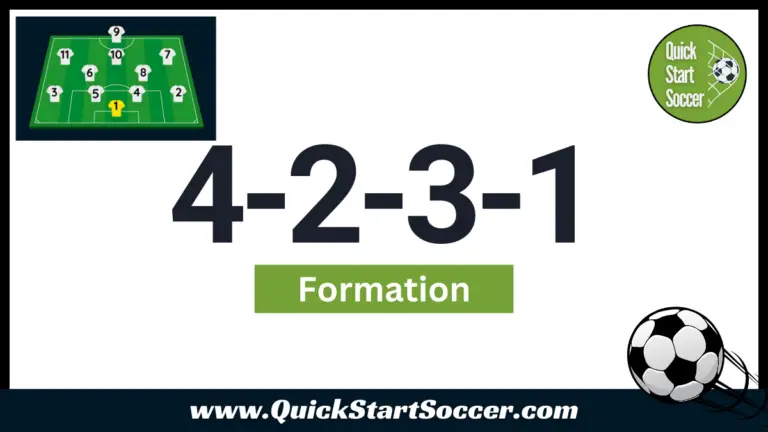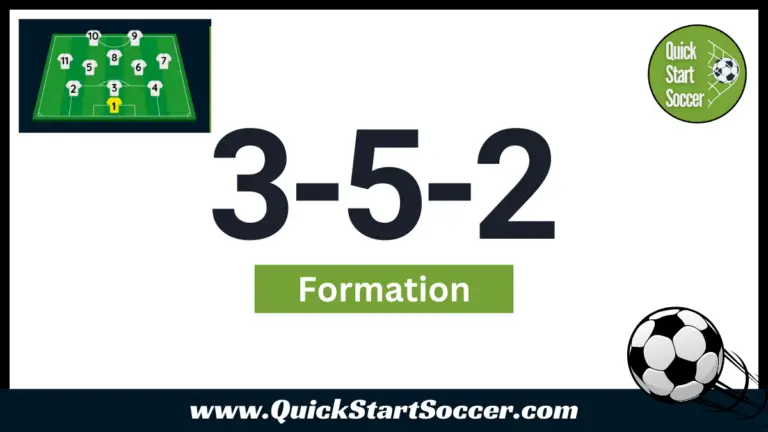3-4-3 Formation Explained | Tactics, Strengths, And Weaknesses
The 3-4-3 soccer formation is beginning to be seen more frequently at the top levels of European club and international soccer. For physically fit and well-organized teams, the 3-4-3 formation is arguably one of the most effective 11v11 formations. In this guide, we will explain exactly what the 3-4-3 soccer formation is, how to set it up, and the strengths and weaknesses of this formation. We will also look at the best formation to counter the 3-4-3 and what professional teams have successfully used the 3-4-3 formation in recent years.
What Is The 3-4-3 Formation In Soccer?
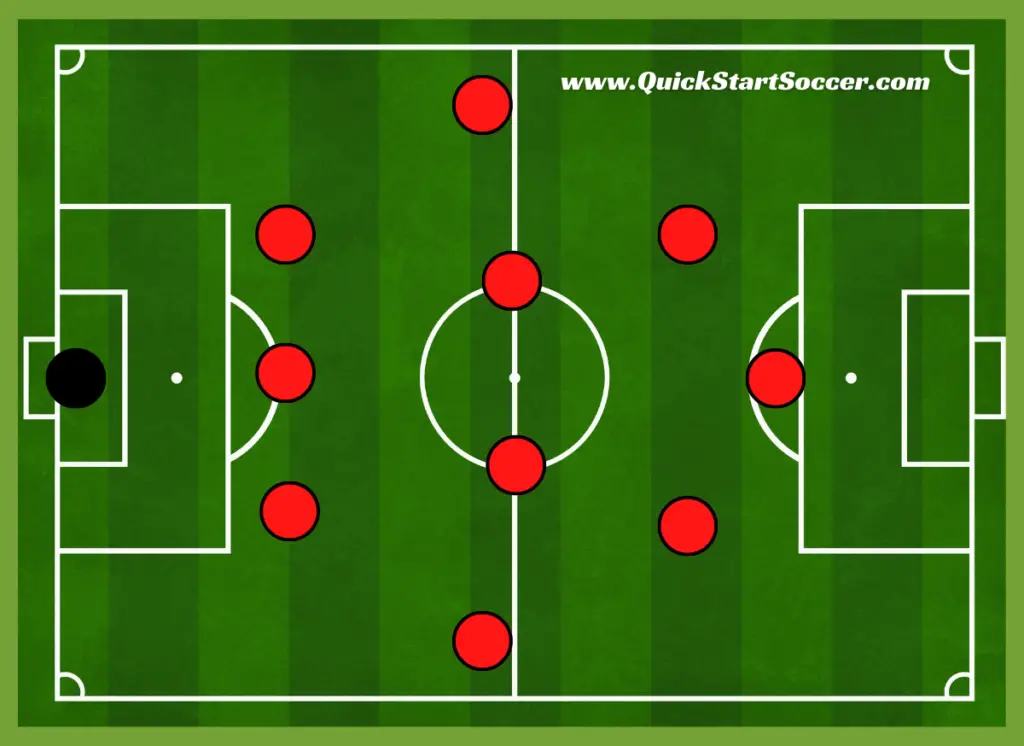
The 3-4-3 soccer formation has a strong defensive balance, with three central defenders lining up behind two central defensive midfielders (CDMs). Having two CDMs in this position is sometimes referred to as a double pivot. Combined, these five players form the defensive base of the team. They are flanked by two traditional wing-backs, with one on the left and one on the right. Up top, the 3-4-3 formation has three forwards. Although the three forwards can line up in any number of ways, it is most common to have a central striker (otherwise known as a number 9) with two free-moving number 10’s playing behind them.
The 3-4-3 formation is believed to have originated in Italy, where a more defensive mindset led to many teams playing with three central defenders. With many teams utilizing a 3-5-2, more adventurous coaches were able to make effective use of a third forward in attacking areas.
In the U.S.A, Anson Dorrance, the legendary UNC soccer coach, has found great success playing with his own variation of the 3-4-3. Anson sets his team up to play a diamond midfield rather than a double pivot. More on that below!
What Is The 3-4-3 Diamond Formation?
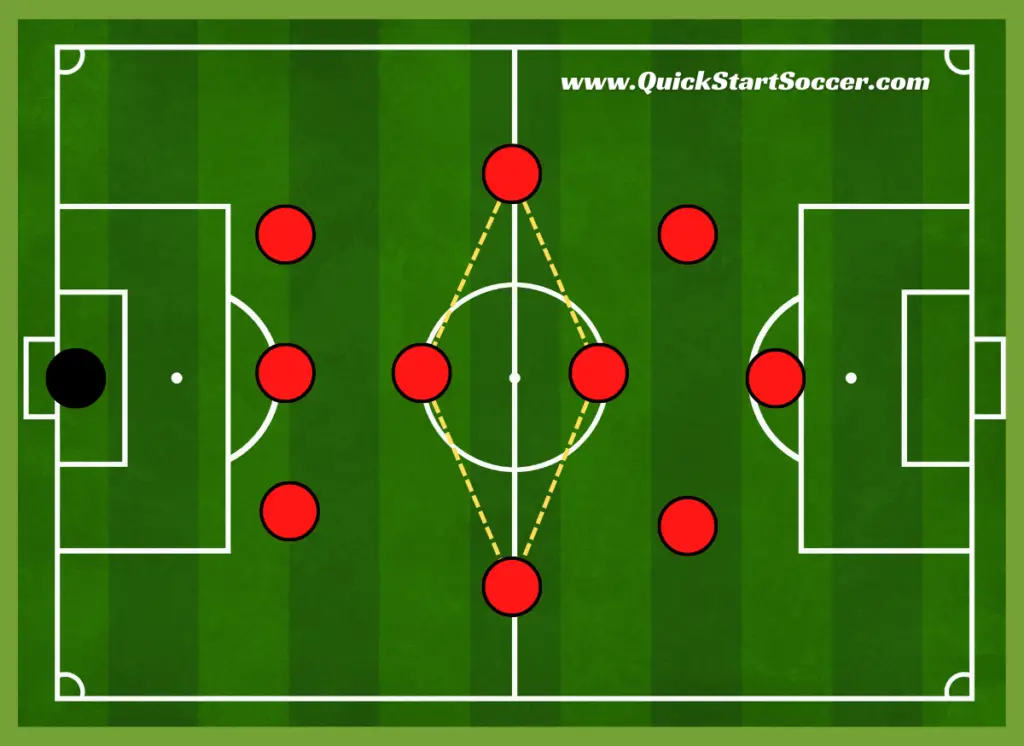
The 3-4-3 diamond formation is extremely similar to a regular 3-4-3. However, it does not have a double pivot (two central defensive midfielders) in the middle of the park. Instead, the formation utilizes one central defensive midfielder and one attacking central midfielder. These two central midfielders are flanked by left and right-wing backs. Together the four players create a diamond shape in the midfield areas, hence the name ‘3-4-3 diamond formation.’
The 3-4-3 diamond formation has been used with incredible success by the legendary UNC coach, Anson Dorrance. Anson believed this formation was perfect for putting high pressure on the opponent’s defense while offering multiple vertical pass options on the counterattack.
3-4-3 Formation Strengths And Weaknesses
Strengths
The 3-4-3 is an incredibly strong and effective formation, which is why it is used by so many coaches. Principally, the shape offers great balance with five outfield players committed to defending (the three central defenders and the double pivot) and five outfield players committed to attacking (the three forwards and the two wing-backs). This balance simultaneously offers security and an attacking threat at all times.
The deployment of offensive wing backs provides continuous opportunities for overloads in wide areas as they look to combine with their same-side forwards. This front-foot attitude on the wings can pin back opposition full-backs, thus nullifying their own attacking strength.
In addition, by having both wingbacks attack at the same time, the forward line has five players across the width of the field looking for opportunities to get in behind and create goalscoring opportunities. This can put immense pressure on defenses, particularly those playing with a back 4.
In these situations, a 3-4-3 playing team might look to ‘overload to isolate’. This term refers to a tactic in which an attacking team keeps the ball on one side of the field through a numerical overload. In response, the opposition defense shifts over to pressure the ball. The attacking team can then switch the play quickly to a player on the other side of the field who will now be isolated in a 1v1 or 1v0 situation. This tactic is used by many of the top coaches to great effect. Most notably, Pep Guardiola.
Another consequence of such offensive wing-backs is that the right and left-side forwards can tuck in a little closer to the central striker, operating in the half spaces immediately behind. This helps create central overloads and means the lone forward is supported much stronger than they would be in a 4-2-3-1.
The 3-4-3 soccer formation has great defensive stability, too. The three center backs and two central defensive midfielders provide a strong core that gives a perfect counterbalance to the more attacking five players on the field. When defending a lead, one or both of the wing-backs can also drop back to provide an additional body in the defensive third of the field. This further demonstrates the flexibility that the 3-4-3 soccer formation offers.
Weaknesses
The 3-4-3 soccer formation has two core weaknesses that a clever opponent will often try and exploit. Firstly, a backline of three is able to cover a lot less space than a traditional back four. As such, the three center backs can be vulnerable to attacks in wide areas, particularly when being hit on the counter.
The second core weakness is that the double pivot of two central defensive midfielders can get outnumbered when facing a team that plays with three central midfielders (e.g., in the 4-3-3). This numerical inferiority can make it harder to maintain possession in central areas. The result of this is that the 3-4-3 playing team risks losing control of the game and letting their opponents set the tempo of play.
In addition to these two core weaknesses, the 3-4-3 soccer formation places incredibly high physical and technical demands on their wing-backs. These players need to contribute in defense as well as attack and require a good deal of speed, skill, and stamina. If a squad does not include three to four players who can excel in these uniquely difficult positions, the 3-4-3 soccer formation is unlikely to succeed.
Best Formation To Counter The 3-4-3
The best formation to counter the 3-4-3 is the 4-2-3-1. In a 4-2-3-1 formation, a team can dominate in the defensive and midfield areas, nullifying the attacking threat that the 3-4-3 poses. A back four can feasibly contain the three forwards with good organization, while the five midfielders can look to dominate their opposite four and control the tempo of the game. When pushing into attacking areas, the 4-2-3-1’s wingers can quickly join the lone striker to make a front three that will give the backline problems.
What Teams Use The 3-4-3 Formation?
Gareth Southgate’s England
Gareth Southgate has used a multitude of formations in his 6-year tenure with the England National team. One of the formations he has used most is the 3-4-3. In the right wing-back position, Trent Alexander Arnold, Kieran Trippier, and Reece James have all been able to excel in the role. To combat the weakness of a back 3, Southgate will often play either Kyle Walker as the right-sided central defender or Luke Shaw as the left-sided central defender. Both are able to use their pace to assist the team in defending in wide areas.
Thomas Tuchel’s Chelsea
Thomas Tuchel made an immediate and incredible impact at Chelsea when he won the Champions League in the 2020/21 season after taking over from Frank Lampard. Tuchel implemented the 3-4-3 formation that he had been using at Paris St Germain, and the Blues adapted to it immediately.
Reece James, Ben Chilwell, and even traditional winger Callum Hudson Odoi offered the attacking threat in the wing-back positions. Mason Mount and Kai Haverts excelled in the front 3, playing either side of Timo Werner in the free-moving number 10 roles. At the core of the team, Ngolo Kante and Jorgino offered unbelievable stability as the double pivot in front of their three-man defense. The team set up in a classic 3-4-3 soccer formation, cementing its reputation as one of the strongest formations around.
More Formation Guides
One of the things that makes soccer such a fascinating sport to watch, coach, and play, is the variety of tactics and formations that can be utilized to maximize a team’s chances of winning on the day. Before you go, be sure to check out some of our other formation guides below to see the strengths and weaknesses of each of these formations and how teams are using these to up their game.


